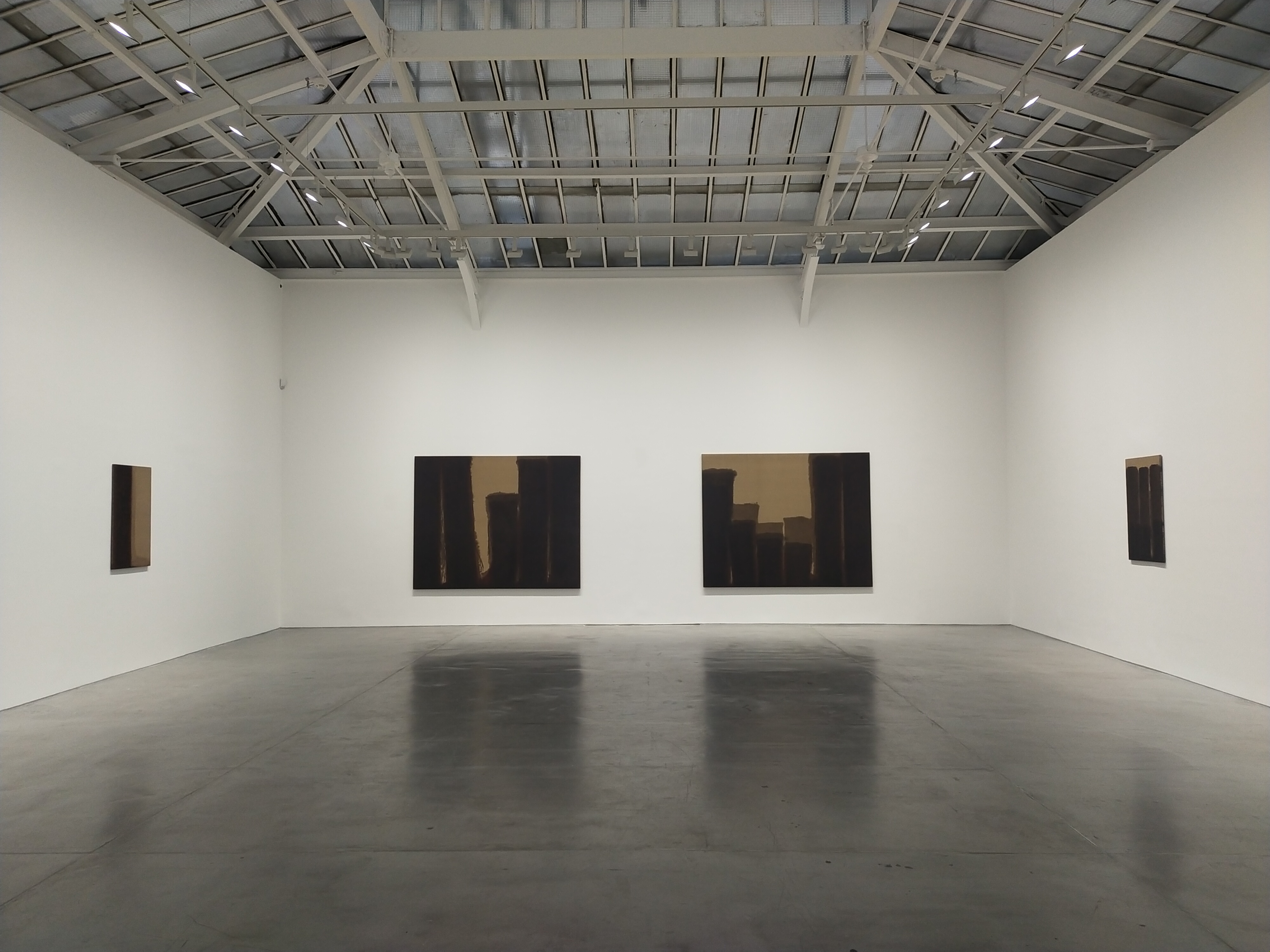
The diluted pigments in the turpentine seem to continuously spread on the rustic canvases of Yun Hyong-Keun. You can almost see the cliffs and mountains in the abstract flat areas with their fleeting contours - and above all passages, openings, portals. Their heaviness and brown color remind us of the cast iron of Rodin’s The Gates of Hell. Yun Hyong-Keun nicknames his works “the gates of Heaven and earth” because there is something organic in their earthy browns and touches of blue. But in this dampness, it is the air that seems to be missing.
And with good reason. Born in 1928 in Miwon in the center of what is now South Korea, Yun Hyong-Keun experienced the colonization and enslavement of his country by Japan, the Korean war, and authoritarian regimes, which he positioned himself against as soon as he studied art in Seoul. In the 1970s, he was accused of breaking the anti-communist laws of the military dictatorship at the head of South Korea. He was blacklisted, but it was the bloody suppression of the Gwangju uprising in May of 1980 that pushed him into exile in Paris with his family until 1982. With around twenty canvases, mostly unpublished, the David Zwirner gallery unveils what could be called “the Parisian period” of the giant of Korean contemporary art. Although brief, it is fundamental and gives him a breath, a digression - between personal freedom and concern for his country.
“It’s heavy”, breathes a lady in the main room of the exhibition. Admittedly, the flattened areas of brown that almost appear black invade the canvases. In this period of exile and uncertainty for the artist, the blocks, like wavering monoliths, seem to be swaying. But every gate has an opening. Each canvas has light. Yun Hyong-Keun does not look for it through brightness or reflections like other artisans of darkness. He lets it emerge from the absence of paint left - in the Asian pictorial tradition of emptiness and fullness.
A leading figure in the Dansaekhwa movement (“one color” in Korean), Hyong-Keun explores the properties and behaviors of the paint. He wants it to be liquid, like the ink of his calligrapher father. But he traded delicate brushes for large brushes. He traces his monoliths directly on the ground on the raw canvas or linen. Almost like a dry cleaner, he lets the paint penetrate the layers of the textile, migrate, spread, and sometimes disappear. This partially controlled creation extends over several days or months, during which Yun Hyong-Keun superimposes the layers without always letting them dry. The paint will thicken to trace sharper contours and forms more clearly detached from their background, in the 1990s and 2000s, at a time when Korea was discovering democracy and prosperity.
For Yun Hyong-Keun, Paris is synonymous with respite, but his country is never far. The second room of the exhibition shows a more luminous work, whose limestone whites, grays, and blues evoke the shades of the French capital. On the traditional Korean “hanji”, paper made of mulberry fibers, the faltering monoliths shrink and turn into vibrant, translucent cells. Or perhaps cobblestones, under which Yun Hyong-Keun reveals the beach of his sandy paper.
Eleven years after his death, one cannot help but see stelae in his monoliths and the certain spirituality of the artist in their juxtaposition. Like a monument of meditative painting of a man who we imagine having healed his wounds while watching the paint migrate, surrounded by linen.
Yun Hyong-Keun, until February 23rd at the David Zwirner gallery, 108, rue Vieille du Temple, Paris, 75003





